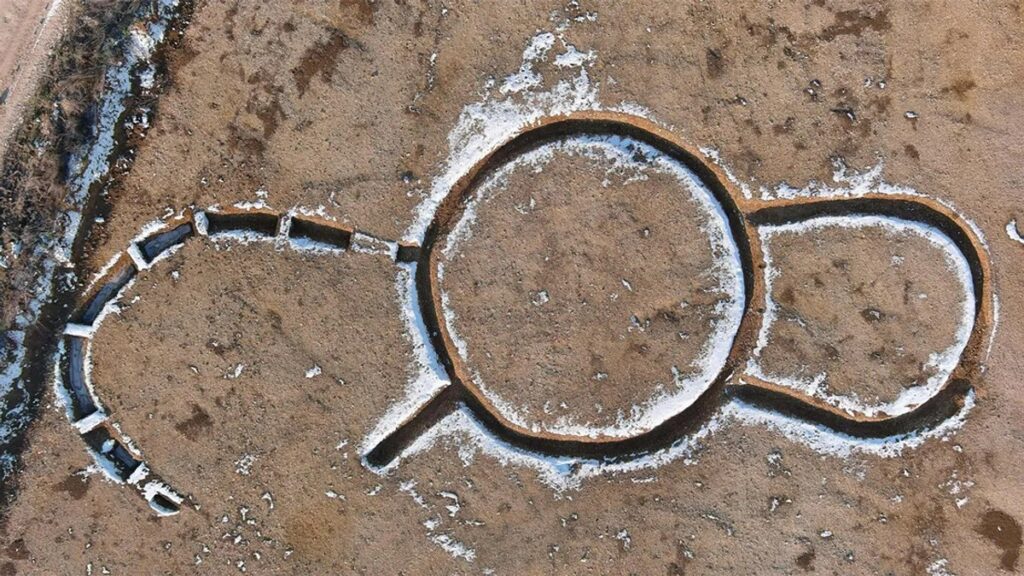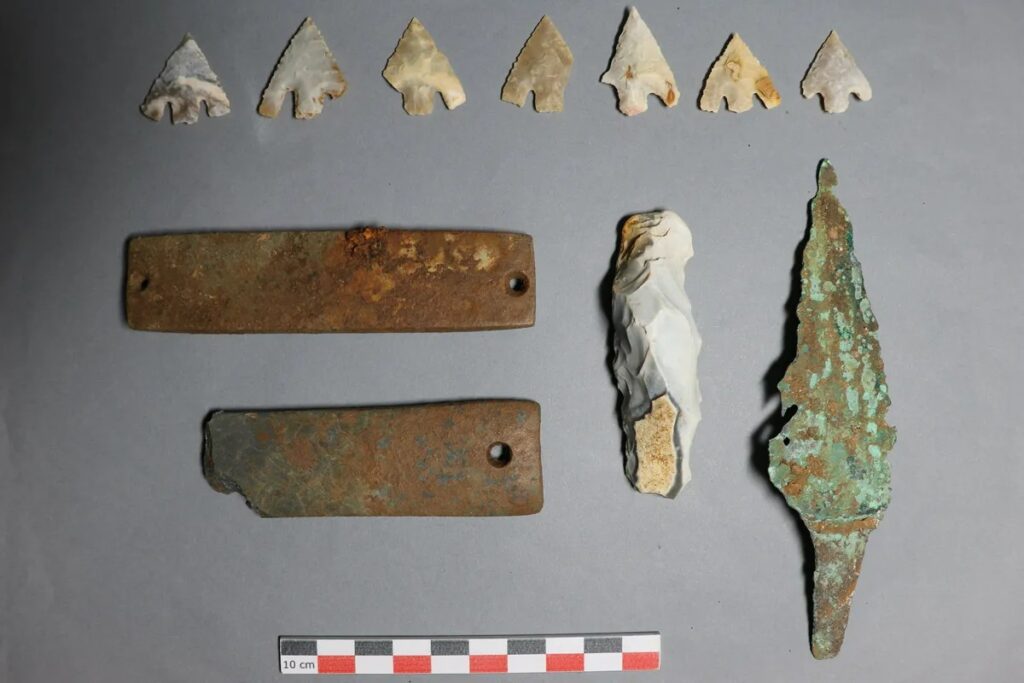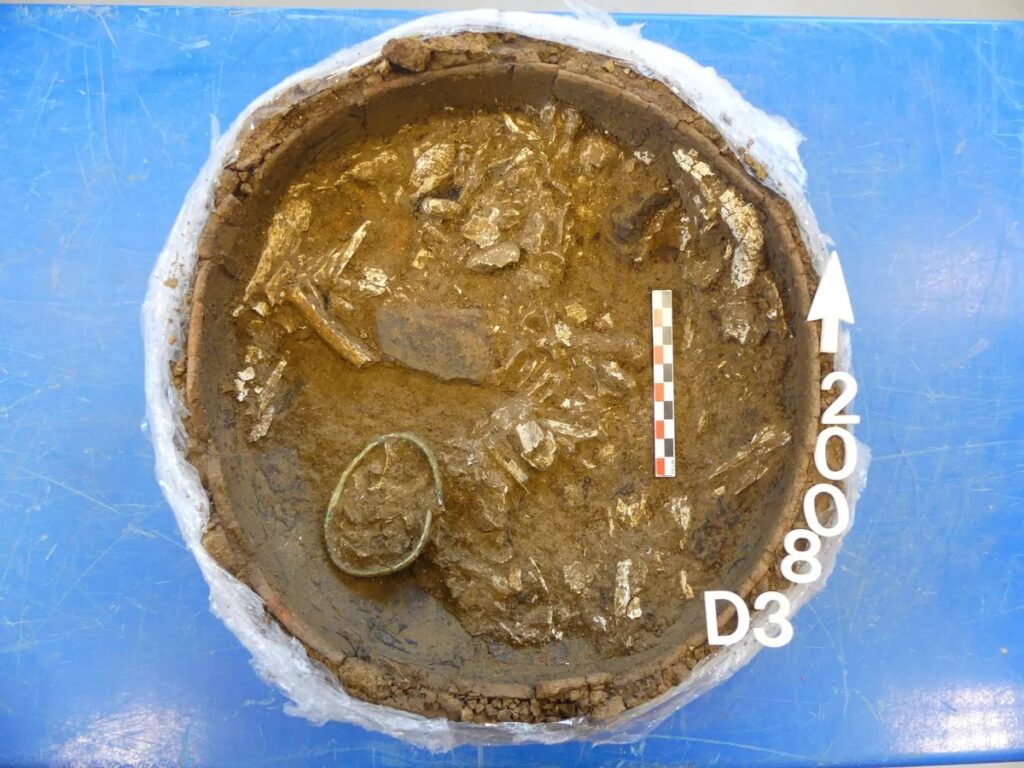
In a remarkable excavation near Dijon, France, archaeologists from the National Institute for Preventive Archaeological Research (Inrap) have unearthed what they deem an “unprecedented” monument, shrouded in mystery and intrigue.
Delving into layers of history spanning from the Neolithic age to the Iron Age, the team stumbled upon an array of artifacts, including flint arrowheads, an archer’s brace, and a copper alloy dagger. Yet, it was the discovery of a peculiar structure that left experts baffled.
Described as an 8-meter (26-foot) long “horseshoe” enclosure attached to a circular enclosure measuring 11 meters (36 feet) in diameter, with yet another open enclosure linked to it, the monument presents an architectural anomaly. Layers of gravel within the side enclosures hint at the existence of ancillary structures, all dating back to the same enigmatic epoch.

Image courtesy of Inrap, © Jérôme Berthet, Inrap
“This type of monument seems unprecedented and currently no comparison has been possible,” Inrap elucidated in a press release. The enigma deepens as the team grapples with the challenge of dating the structure accurately.
Initial assessments point to a potential attribution to the Neolithic period, as evidenced by cut flints found within the ditches surrounding the monument. However, uncertainties persist, prompting the team to turn to radiocarbon analysis for definitive dating.
Radiocarbon analysis, a cornerstone of archaeological dating methodologies, entails measuring the decay of carbon-14 in organic remains to determine their age. By applying this technique, researchers hope to unveil the true age of the monument, unraveling its enigmatic origins.
Amidst the excavation, tantalizing glimpses into Bronze Age settlement emerge, notably through the discovery of several wells. Yet, it is a necropolis dating back to 1500 BCE – 1300 BCE that adds another layer of intrigue. Marked by the presence of copper alloy pins and an amber necklace, this ancient burial ground offers a glimpse into bygone rituals and customs.

Image courtesy of Inrap, © Pauline Rostollan, Inrap
However, the acidic nature of the soil presents a formidable challenge, preventing the preservation of complete burials. Despite this setback, the discovery underscores the rich tapestry of history woven into the fabric of the Marliens landscape.
As the excavation progresses, the quest for answers intensifies. The true nature and purpose of this enigmatic monument remain elusive, prompting further inquiry and speculation. Carbon dating and meticulous study hold the promise of unveiling its secrets, shedding light on a bygone era and enriching our understanding of ancient civilizations.

Image courtesy of Inrap, © Luc Staniaszek, Inrap
The discovery of this unprecedented monument in the heart of France ignites the imagination and fuels the pursuit of knowledge, reminding us of the inexhaustible mysteries that lie buried beneath the earth’s surface.

Leave a Reply